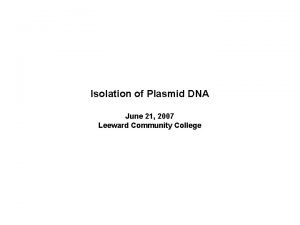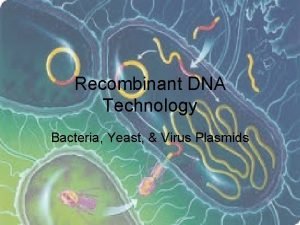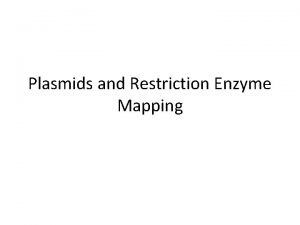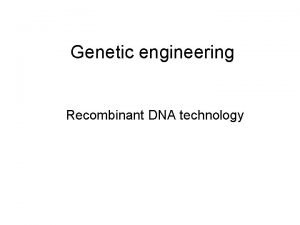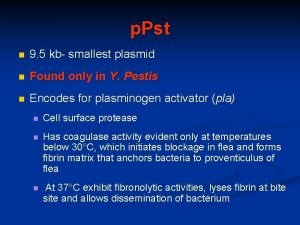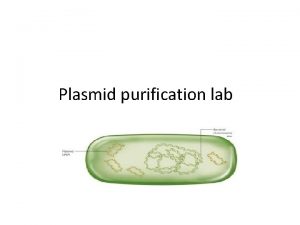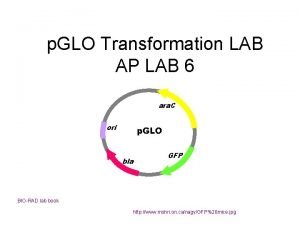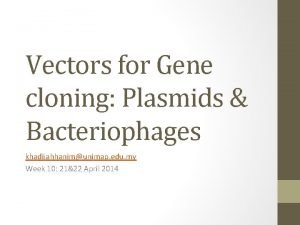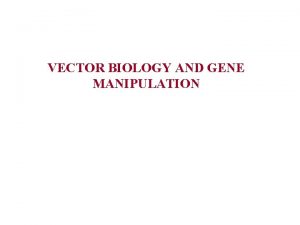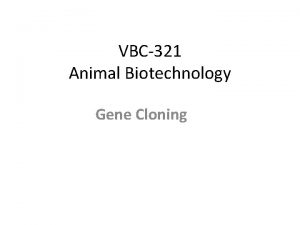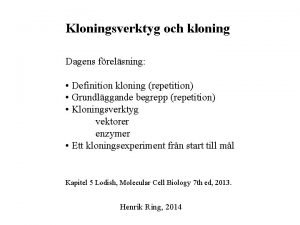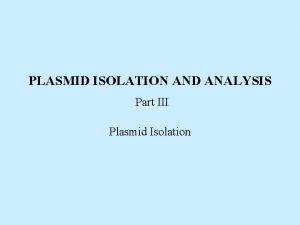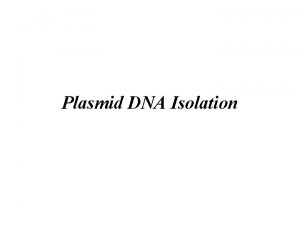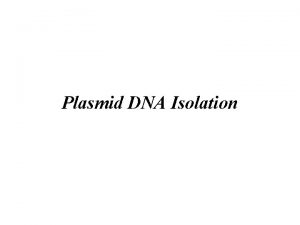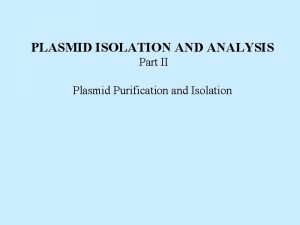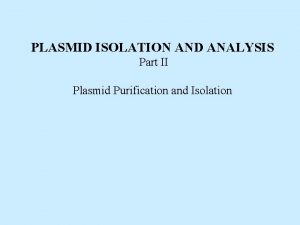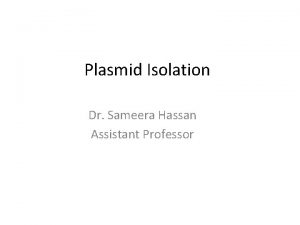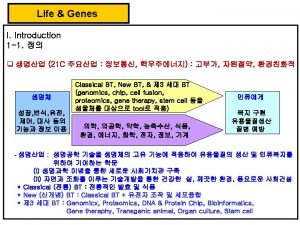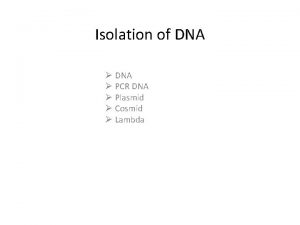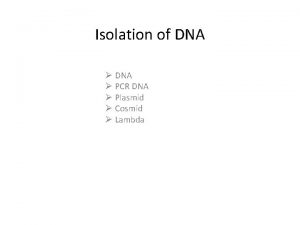Plasmid DNA Isolation Principle DNA isolation is a













- Slides: 13

Plasmid DNA Isolation

Principle DNA isolation is a process of purification of DNA from sample using a combination of physical and chemical methods. The first isolation of DNA was done in 1869 by Friedrich Miescher. Currently it is a routine procedure in molecular biology or forensic analyses. There are three basic and two optional steps in a DNA extraction: 1). Cells which are to be studied need to be collected. 2). Breaking the cell membranes open to expose the DNA along with the cytoplasm within (cell lysis). 3). Lipids from the cell membrane and the nucleus are broken down with detergents and surfactants.

The solution is treated with concentrated salt solution (saline) to make debris such as broken proteins, lipids and RNA to clump together. Centrifugation of the solution, which separates the clumped cellular debris from the DNA. Ethanol precipitation usually by ice-cold ethanol or isopropanol. Since DNA is insoluble in these alcohols, it will aggregate together, giving a pellet upon centrifugation. Precipitation of DNA is improved by increasing of ionic strength, usually by adding sodium acetate. Phenol–chloroform extraction in which phenol denatures proteins in the sample. After centrifugation of the sample, denaturated proteins stay in the organic phase while aqueous phase containing nucleic acid is mixed with the chloroform that removes phenol residues from solution.

Reagents and Material Reaquired Table-top centrifuges 1. 5 -ml eppendorf tube Resuspension solution (P 1 buffer) 50 m. M glucose 10 m. M EDTA 25 m. M Tris (p. H 8. 0)

Lysis solution (P 2 buffer) 0. 2 N Na. OH 1% SDS Store at room temperature Neutralizing solution (P 3 buffer) 3 M KOAc (p. H 6. 0) For 100 ml solution, 60 ml 5 M potassium acetate (49. 07 g potassium acetate in 100 ml H 2 O) 11. 5 ml glacial acetate and 28. 5 ml H 2 O, store at room temperature.

TE 1 m. M EDTA 10 m. M Tris-HCl (p. H 8. 0)

PROCEDURE Grow bacterial (E. coli) culture in NB medium at 37 °C overnight (O/N) with shaking. Transfer O/N culture to a 1. 5 -ml eppendorf tube, and spin down cell culture (twice) at high speed for 1 min. Discard the supernatant. To remove the liquid completely by upside down tube onto a piece of paper towel for a few seconds. Add 100 μl of resuspension solution (P 1 buffer) into each tube, and vortex to completely resuspend cell pellet. Add 100 μl of lysis solution (P 2 buffer) and mix by gently inverting the tube 5 -6 times. The solution should quickly turn transparent and become more viscous indicating bacterial lysis has taken place.

Add 150 μl of neutralizing solution (P 3 buffer) and mix by inverting the tubes several times. At this point bacterial chromosomal DNA is usually seen as a white precipitate. Centrifuge the tubes at high speed for 10 min. Carefully transfer the supernatant (try to not disturb the white precipitate) to a new labeled 1. 5 -ml eppendorf tube with a 1 ml pipette. Add 2. 5 -3 volume of cold ethanol (stores at -20 °C) to each tube and mix by inverting the tubes a few times. Spin down DNA precipitate (transparency pellet) at high speed for 10 min.

Discard the supernatant and remove the remaining liquid as much as possible by leaving the tube upside-down on a piece of paper towel, then keep the tubes in a tube holder and air dry for 10 -20 min. To dry faster, keep tubes at 37 °C heat blocker. DNA precipitate turns white when dry. Resuspend the DNA pellet with 50 μl TE.

Observation

Result


This work is licensed under a Creative Commons Attribution-Share. Alike 3. 0 Unported License. It makes use of the works of Mateus Machado Luna.

